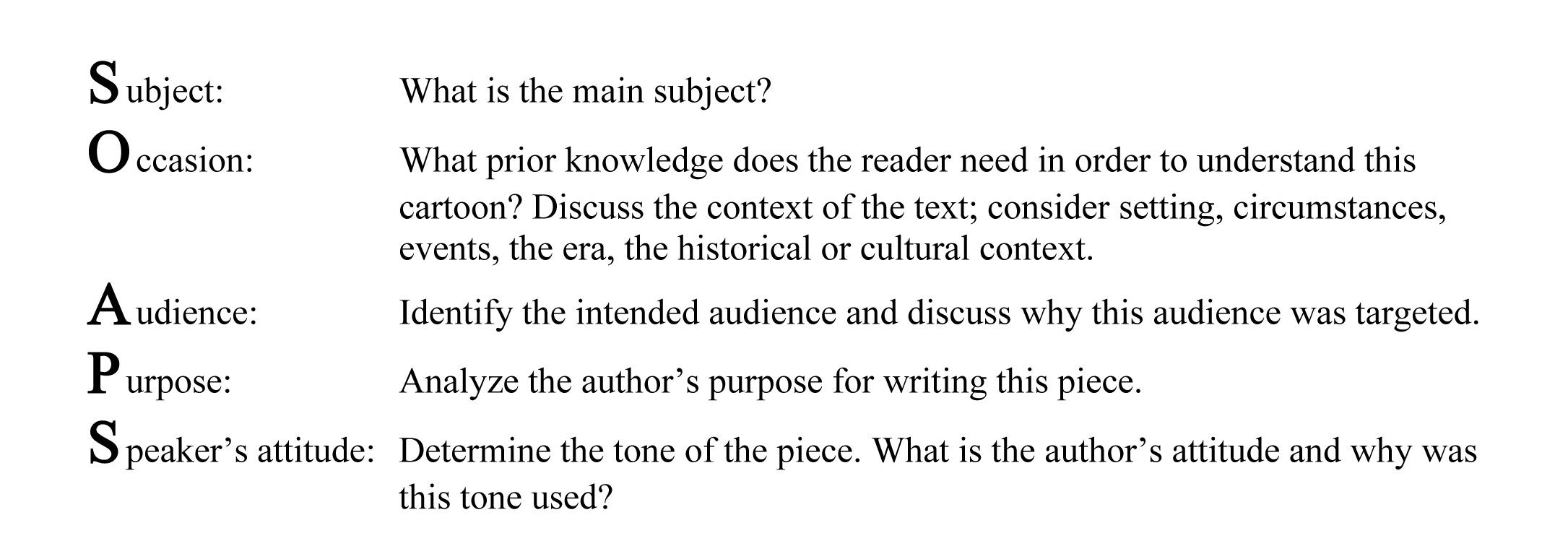Note: We spent a few more minutes at the beginning of class today watching some student-made poetry movies. Because of time limitations, I am sharing a skeletal view of the lessons. In my lesson plan book, “What the teacher did” and “What the students did” are in side-by-side columns. However, they are presented sequentially below due to the constraints of this blog platform.
What the teacher did: I briefly shared some news updates with students.
I put a political cartoon up on the document camera for all students to see. I purposefully picked a topic other than guns. The cartoon I selected was about the resignation of Al Franken, as I was aiming for something my students would not know a lot about. The cartoon depicted a drawing of Franken. On the left side of his head, the caption read: “What he said: ‘I will resign.’” On the right side of his head the caption read, “What he should have said: ‘I will resign when Donald Trump resigns.’”
Only one student knew the Franken story. This led to a discussion on the importance prior knowledge plays in reading comprehension. My students could read the words; they just did not possess the context to understand them. We discussed what a reader would have to know before making sense of the cartoon. This also led to a pep talk on why doing the article of the week is so important.
What the students did: Students were directed to three links that led them to numerous political cartoons on the issue of mass shootings. Here are the three sites:
https://www.usnews.com/cartoons/gun-control-and-gun-rights-cartoons
https://www.cagle.com/cartoons/
http://theweek.com/cartoons?sort=publish_date&page=4
They were then given 10-15 minutes of time to read and discuss various cartoons. They then selected one cartoon and wrote brief reflections.
What the teacher did: As students were surfing, I bounced around the room and helped them to understand those poems where their prior knowledge was lacking. Using the Franken cartoon, I modeled how to analyze a cartoon using the S.O.A.P.S. strategy. This is a strategy developed years ago by The College Board:
I worked through the SOAPS strategy on the Franken cartoon, thinking out loud and eliciting responses from the students.
What the students did: Students selected one cartoon they felt was good, and they completed a SOAPS chart in their notebooks. Upon completion, they shared with others at their tables.
What the teacher did: As students were working, I conferred with random students about why they chose that particular cartoon and what they were thinking.
Some reflections on the lesson:
- I was struck—and a little alarmed—about some of the things not known by some of my students. For example, many of my students did not understand that the Republican party is represented by an elephant, and that the Democratic party is represented by a donkey. Some did not know what “GOP” means, or that an “Uncle Sam” hat was symbolic of our nation. They could read the words in the cartoons, but their prior knowledge is lacking.
- The students really enjoyed surfing the cartoons. Many times I heard one student say to another, “Hey, look at this one…” I felt good about exposing them to political cartoons, and I could feel some of them getting into them as much as I love them.

